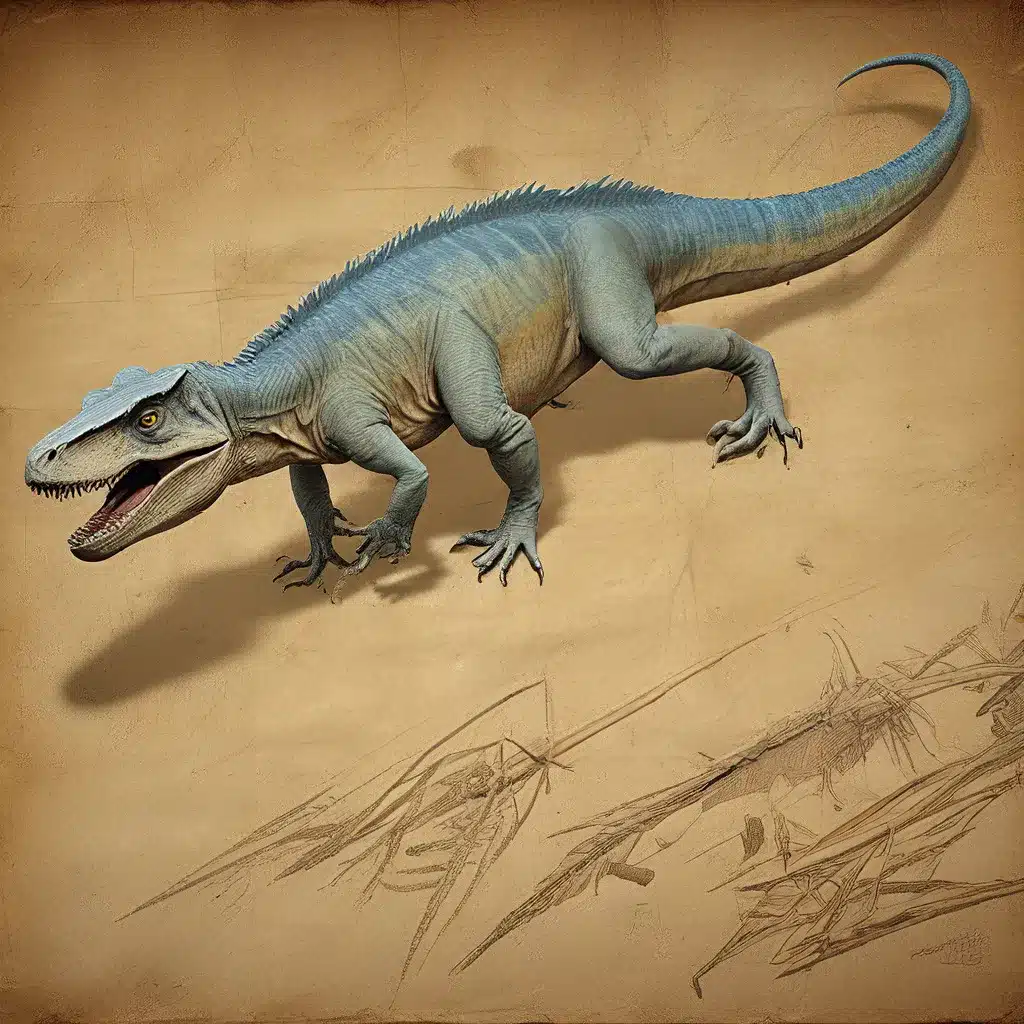
Tracing the Origin and Evolution of Diapsid Reptiles
The early evolution of diapsid reptiles, one of the most diverse and successful lineages in the history of life, holds the key to understanding how some of the most iconic and enigmatic creatures of the Mesozoic era came to be. From the fearsome predators of the Triassic period to the massive marine reptiles that ruled the ancient seas, the diapsid reptiles have left an indelible mark on our planet’s past.
Emerging during the Permian period, these reptiles rapidly diversified, giving rise to an astonishing array of forms, each uniquely adapted to its environment. The origin of the major diapsid lineages, such as lizards, snakes, tuataras, turtles, and archosaurs (including dinosaurs and crocodiles), has long been a subject of intense scientific inquiry. Recent advancements in paleontology and evolutionary biology have shed new light on the timing and patterns of this evolutionary radiation.
Utilizing a comprehensive dataset, researchers have uncovered a complex and dynamic picture of diapsid evolution, revealing periods of rapid phenotypic change punctuated by lulls in diversification. This study provides crucial insights into the evolutionary dynamics that shaped the emergence of new body plans and the rise of the dominant reptilian clades that would come to define the Mesozoic world.
Unraveling the Pace of Phenotypic Innovation
One of the most striking findings of this research is the uneven nature of phenotypic evolution among early diapsid reptiles. While the origin of the major diapsid lineages during the Permian period was marked by accelerated rates of morphological change, the Guadalupian (middle Permian) saw a decrease in evolutionary rates and a drop in phenotypic disparity. This pattern suggests that the Guadalupian mass extinction, a lesser-known event that impacted many tetrapod lineages, may have played a significant role in shaping the early evolution of diapsids.
Interestingly, the recovery from the Permian-Triassic mass extinction (the largest in Earth’s history) saw a resurgence of phenotypic diversification among some diapsid lineages, such as archosauriforms, rhynchosaurs, and marine reptiles. This adaptive radiation in the Triassic period was characterized by high rates of phenotypic evolution and a rapid expansion of morphological disparity, as these reptiles quickly occupied newly available ecological niches.
However, not all diapsid lineages exhibited the same evolutionary dynamics. The study found that some groups, like choristoderes, thalattosaurs, and early lepidosauromorphs, maintained relatively low evolutionary rates even during the Triassic, suggesting a more gradual and steady pattern of morphological change.
The Rise of Snakes and Other Phenotypic Innovations
One of the most remarkable findings of this research is the exceptionally high rates of phenotypic evolution observed in the lineage leading to snakes. The branch giving rise to these iconic reptiles is inferred to have the highest rates of morphological change among all the diapsid lineages examined, indicating that the acquisition of the snake body plan was a rapid and dramatic evolutionary event.
This rapid phenotypic transformation is in stark contrast to the more gradual molecular evolution observed in the snake lineage, suggesting that the key innovations underlying the snake body plan may have been driven by changes in regulatory regions of the genome, rather than alterations in protein-coding sequences.
Insights into the Genetic Basis of Phenotypic Innovation
The decoupling of phenotypic and molecular evolutionary rates observed in this study has important implications for our understanding of the genetic mechanisms underlying major morphological transformations. Traditional theories have often invoked rapid changes in protein-coding genes as the primary drivers of such phenotypic innovations. However, the data presented here supports the emerging view that changes in regulatory regions, rather than coding sequences, may be the key to unlocking the genetic basis of major body plan transformations.
This finding is particularly relevant to the evolution of squamates (lizards and snakes), which are known to have a dramatically different genomic architecture compared to other vertebrates. The rapid accumulation of transposable elements and microsatellites in squamate genomes may have played a crucial role in facilitating the exceptional phenotypic innovations observed in lineages like snakes.
Conclusion: Unraveling the Complexities of Reptile Evolution
The study of diapsid reptile evolution has revealed a complex and dynamic picture of how some of the most iconic creatures in Earth’s history came to be. From the rapid diversification of the major lineages during the Permian to the uneven patterns of phenotypic change observed across different groups, this research highlights the nuanced and episodic nature of macroevolutionary processes.
By integrating fossil evidence with cutting-edge analytical techniques, researchers have uncovered new insights into the genetic and developmental mechanisms underlying major morphological transformations. These findings challenge our traditional understanding of adaptive radiations and point to the importance of regulatory evolution in driving phenotypic innovation.
As we continue to unravel the mysteries of reptile evolution, the Lost Kingdoms website will remain a valuable resource for exploring the latest discoveries and evolutionary theories in this dynamic field of study.


